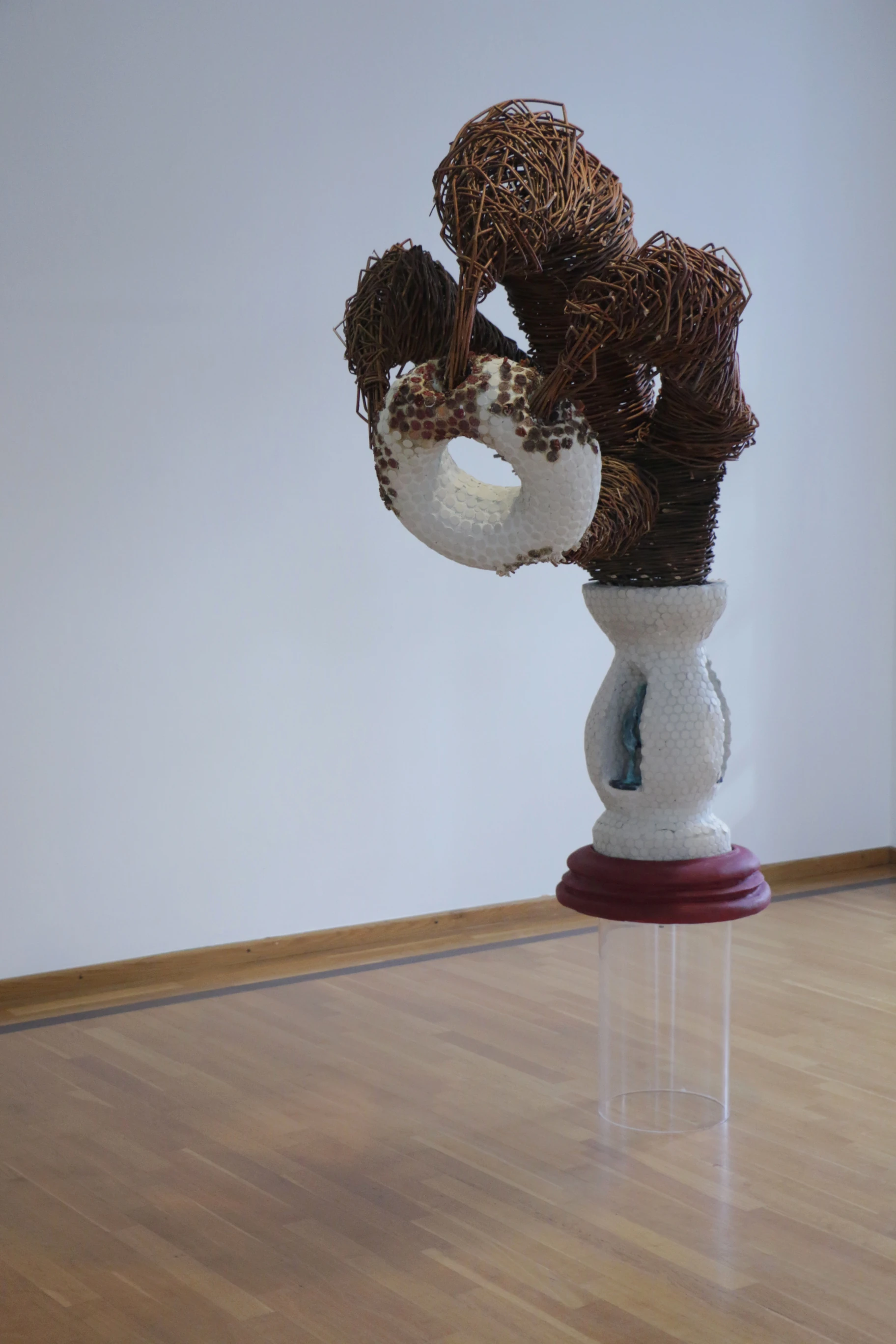PEER - 2024


Breadcrumbing/ 2024/ 125cm x 120cm x 230cm/ wicker, button mosaic tiles, bronze, plaster, plexiglas, latex transfused of a honeycomb
Breadcrumbing/ 2024/
125cm x 120cm x 230cm/
wicker, button mosaic tiles, bronze, plaster, plexiglas, latex transfused of a honeycomb











Switchtracking/ 2024/ 60cm x 60cm x 120cm/ found objects, resin, plexiglas, button mosaic tiles, wood




Filibuster/ 2024/ 55cm x 55cm x 120cm/ soapstone, knitted undercloth, lens, bamboo ring, button mosaic tiles
2024 Museum Goch / Residence NRW+
Edgar Unger’s three sculptures are part of a series of works that he developed over a long period of time combining a multiplicity of techniques. Together they function as cathartic vehicles for challenging experiences and intimate thoughts that the artist processes through his work. Each of these sculptures can be read as an assemblage that leaves plenty of room for interpretation.
Visually, they are an assemblage of techniques and materials that intricately overlap, complement each other and are in tension with one another. Edgar Unger describes techniques as “pragmatic solutions to specific problems”. As an artist, he questions the idea of “mastery” and attempts to free himself from such arbitrary hierarchies as between “high” art and the so-called crafts or between amateurism and expertise. Instead, he is interested in the learning process – often through tutorials and trial and error – and in the concrete result. His sculptures combine mosaic, wickerwork, cast bronze, epoxy resin, found materials, soapstone, plaster and rubber to create elaborate compositions.
Beyond materiality, it is also possible to identify a bundle of historical, architectural and aesthetic references in Edgar Unger’s sculptures. A red element appears here, reminiscent of the porphyry bulge of a Baroque column. There, one recognises a star-like structure that evokes the layout of a late medieval fortress, while the bronze sculptures in the niches of the pedestal of one work allude to the history of sculpture. As with the techniques, however, these references are not organised hierarchically, but seem to follow the internal logic of the individual sculptures, so that each work appears as a unique and only partially decipherable composition of individual parts in terms of both form and content.
Edgar Unger’s sculptures represent complex assemblages of references as well as technical and aesthetic solutions that pile up into a somewhat precarious balance. This apparent fragility, as well as the certain indeterminacy of the function and meaning of the individual parts – where does the pedestal end and the sculpture begin? – are constitutive of his work. This creates a continuous tension that makes the works the meeting point of different, sometimes even contradictory elements.